Biodiversity: The Wildlife of Indonesia’s Forests
Discover the wonders of Indonesia’s forests with six iconic animals and one huge stinky and parasitic flower and see why preserving these forests is so vital.
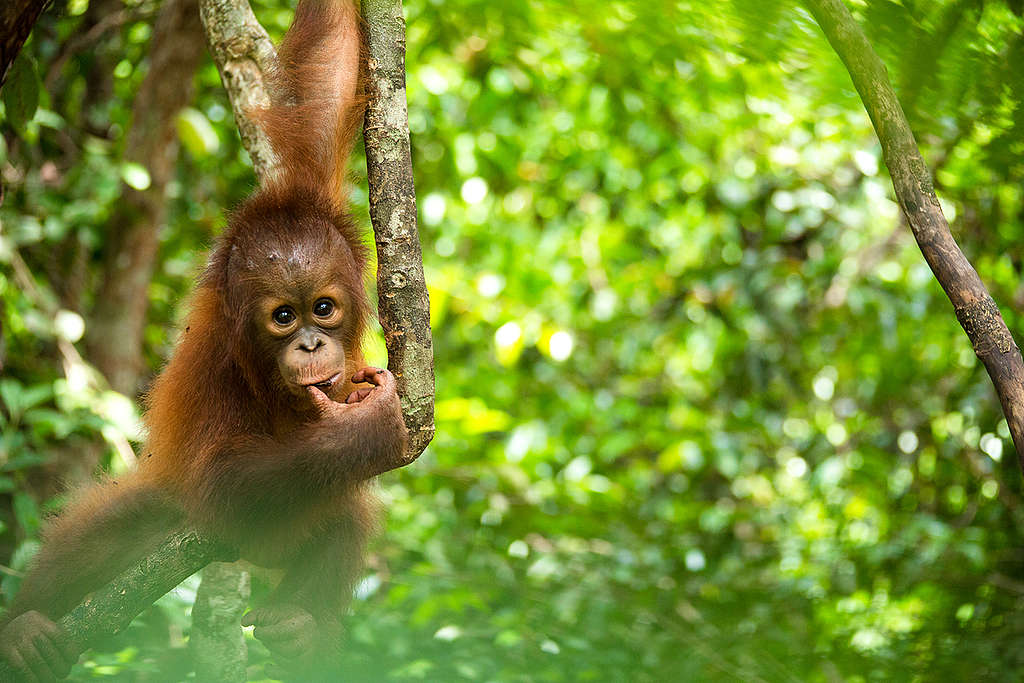
Get to know some of Indonesia’s most iconic creatures
The Wallace Line is an imaginary boundary that runs through Indonesia, separating the distinct wildlife of Asia and Australasia. West of the line, species are typically Asian, including orangutans, tigers and rhinos. East of the line, species resemble those of Australia, such as tree kangaroos and birds of paradise. This biogeographical demarcation highlights the unique evolutionary paths taken by species in the region, showcasing Indonesia’s rich and diverse natural heritage. Let’s meet some of those fascinating species.
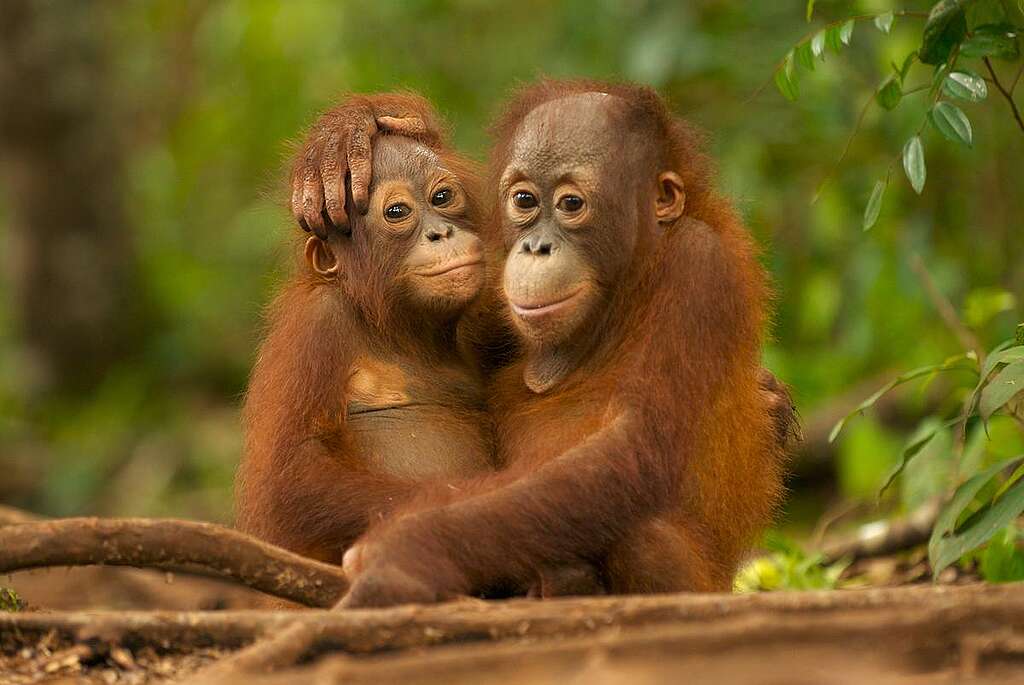
The Orangutan
Orangutans have the longest arms of any primate, reaching up to 2 metres and they have 32 teeth, just like humans. They are master tool users, employing sticks to extract insects and leaves to handle prickly fruits. These great apes spend most of their lives in trees and building nests each night. They have a slow birth rate, with females giving birth only once every 7-9 years, nurturing their young for up to 8 years. Due to habitat loss and human-animal conflict, Orangutans are critically endangered.
The Sumatran Tiger
Sumatran tigers, the smallest tiger subspecies, have unique narrow stripes that help them blend into their dense forest habitat. Unlike most cats, they love water and are excellent swimmers, with partially webbed toes to help them navigate rivers and swamps. These tigers are also incredible leapers, able to jump up to 10 meters in a single bound. They communicate with a range of vocalizations, including a “chuffing” noise that signals contentment. With fewer than 600 individuals left, they are critically endangered due to habitat loss and poaching
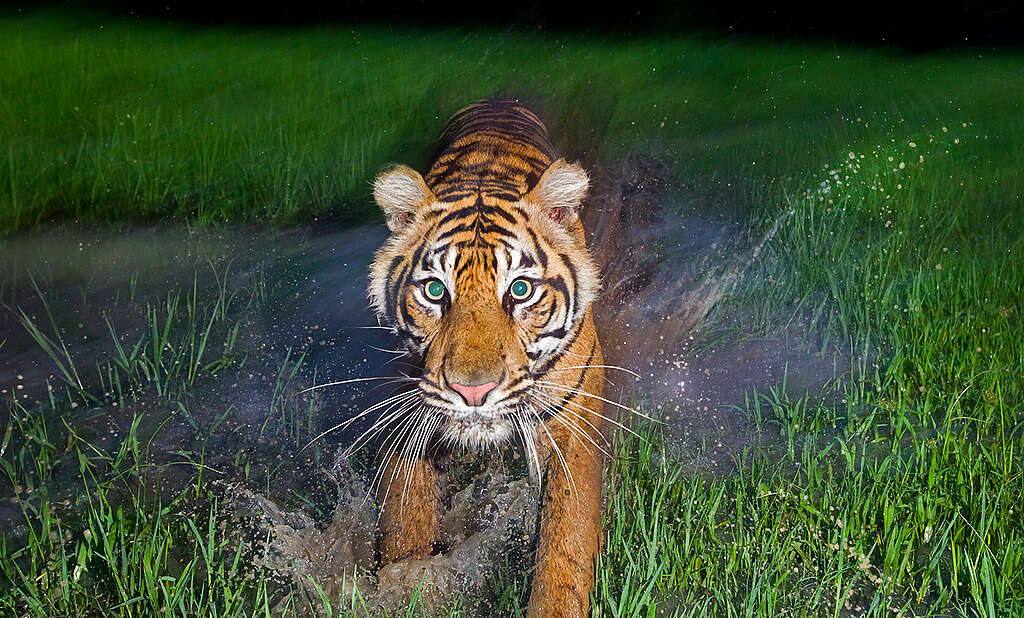
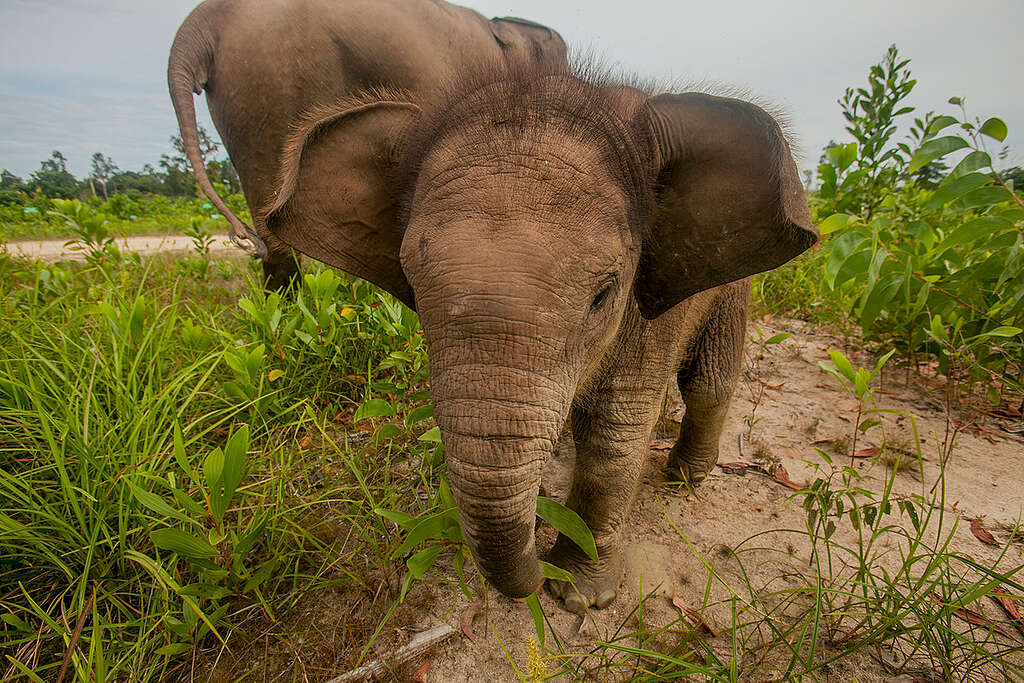
The Sumatran Elephant
Sumatran elephants are the smallest subspecies of Asian elephants, native to Sumatra, Indonesia. They are known for their social behavior, living in matriarchal herds of 20-35 individuals. These elephants communicate using low-frequency sounds that we can’t hear but they can hear from up to 5 kilometers away. They play a vital ecological role by dispersing seeds through their dung, helping regenerate plant life. Consuming up to 150 kg of vegetation daily, they are essential for forest health. However, they are critically endangered with less than 2000 individuals left in the wild due to habitat loss from deforestation and human conflict
Birds of Paradise
Birds of Paradise are renowned for their vibrant plumage and elaborate courtship displays. There are over 40 species, each exhibiting unique colors and intricate feather patterns. Males perform complex dances and use their vivid feathers to attract females, often creating elaborate display areas. These birds have a varied diet, including fruits, nectar, insects, and small vertebrates. They play a vital role in seed dispersal, contributing to the health of their rainforest ecosystem.
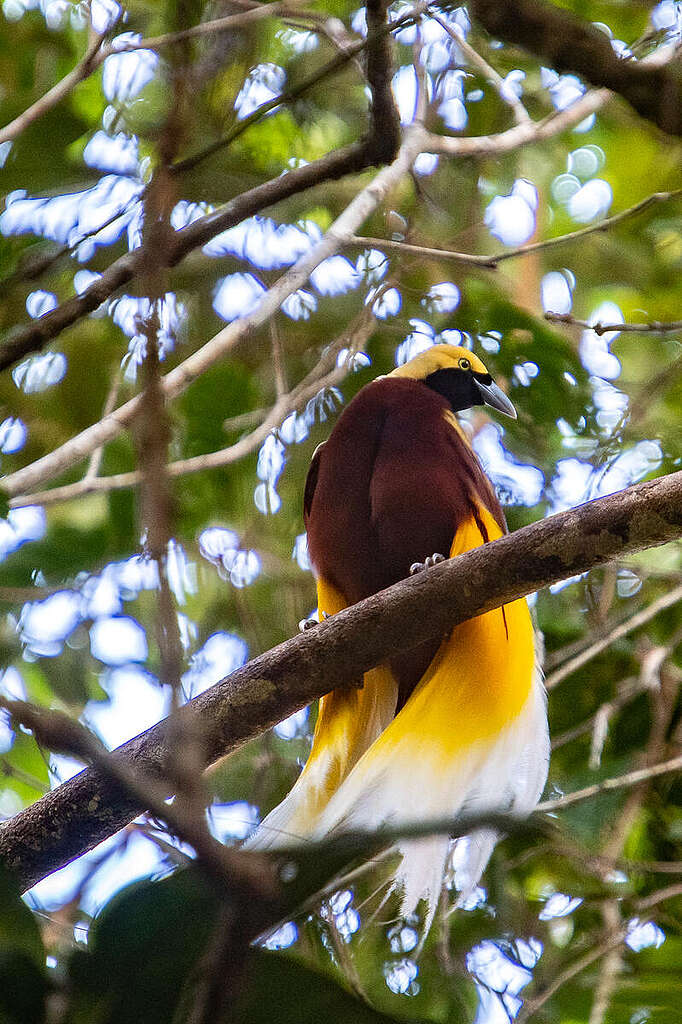
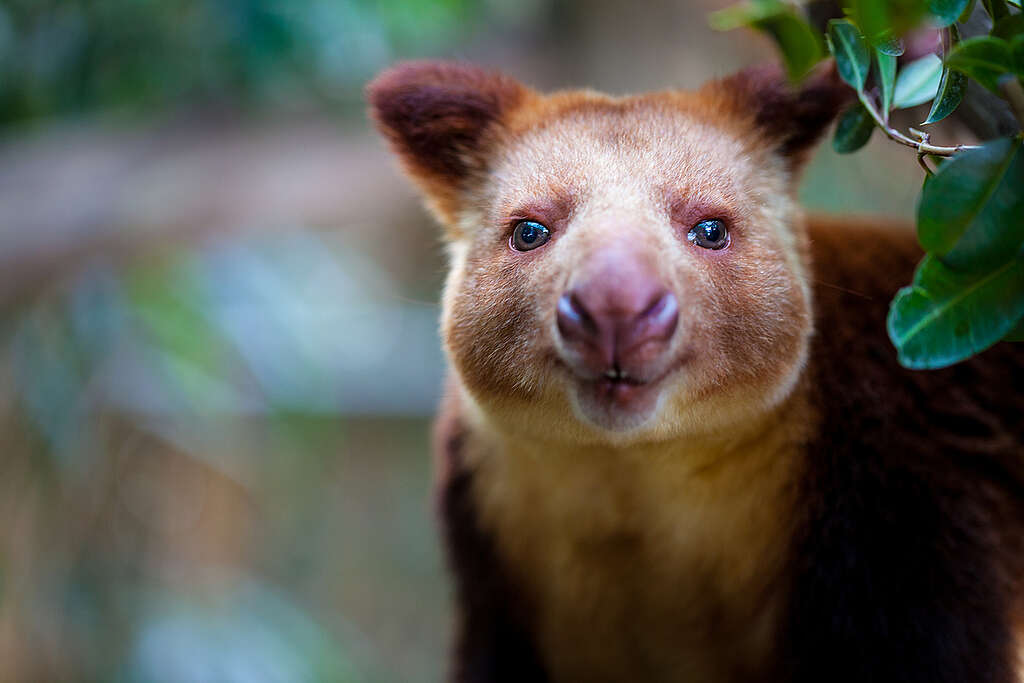
Tree Kangaroo
Tree kangaroos are unique marsupials adapted for life in the trees. Unlike their land bound relatives, they have strong forelimbs, long tails for balance, and sponge-like pads on their feet to grip tree branches. They can leap up to 30 feet between trees and descend from heights of 60 feet without injury. Despite their agility in the trees, they are slow and clumsy on the ground. Tree kangaroos spend about 60% of their time sleeping on tree branches and cool themselves by licking their forearms. Every species of tree kangaroo is considered to be vulnerable, endangered, or critically endangered.
Sumatran rhinos
The Sumatran rhino, the smallest and hairiest of all rhinos. With a gestation period of 16 months it is now critically endangered with fewer than 50 individuals left. Mostly found in the dense forests of Sumatra, these solitary creatures have two horns and are known for their wallowing in mud baths, which help keep them cool and parasite-free. Closely related to extinct woolly rhinos, they have a fondness for fruits like mangos and figs. Conservation efforts are crucial as habitat loss and poaching continue to threaten their survival
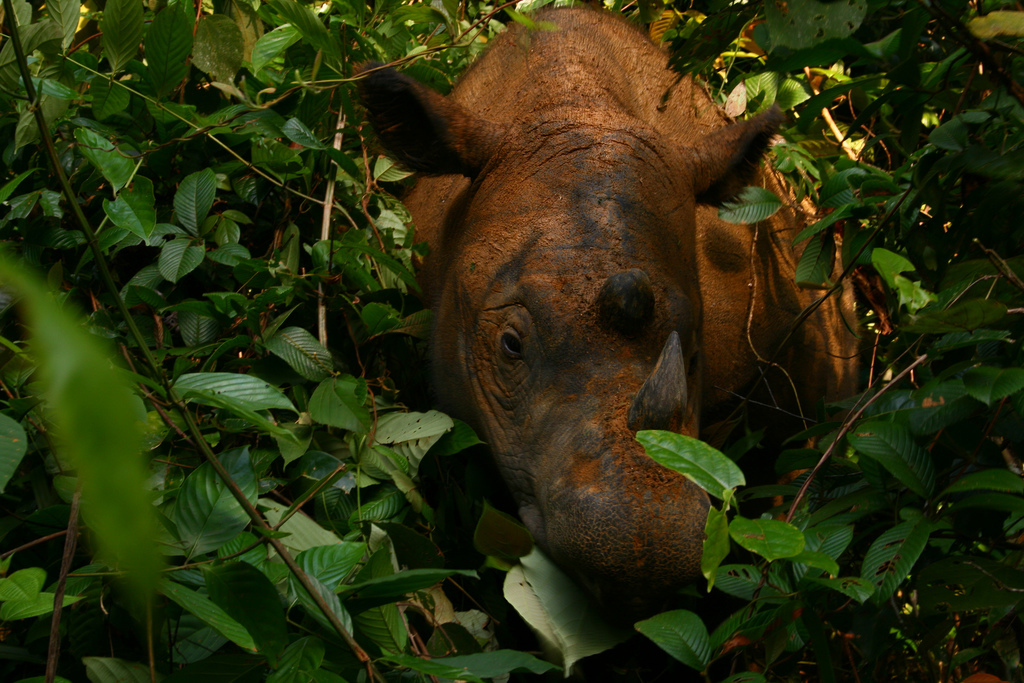
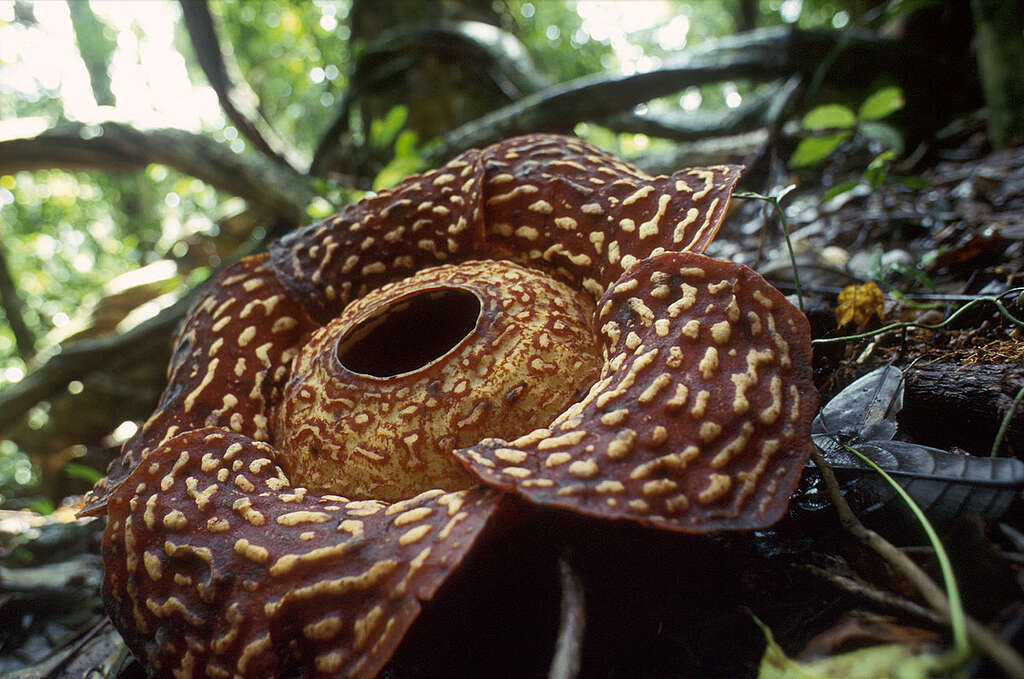
And a plant – Rafflesia arnoldii
Rafflesia arnoldii, also known as the “corpse flower,” produces the largest individual flower on Earth, reaching up to three feet in diameter and weighing up to 20 pounds. This parasitic plant has no roots, stems, or leaves and relies entirely on a host vine, the Tetrastigma, for nutrients. The flower emits a strong odor of rotting meat to attract carrion flies for pollination. Remarkably, it takes about 21 months for the bud to develop and bloom, but the flower only lasts for 5-7 days before it begins to decompose
The dangers to Indonesia’s wildlife
Indonesia’s rich biodiversity is a treasure worth protecting. Home to 15% of the world’s known species, it faces threats from deforestation driven by illegal logging, palm oil, and pulp plantations. These industries destroy habitats, increasing human-wildlife conflict and pushing species like the Sumatran tiger, orangutans, and elephants to the brink of extinction. By pushing for stricter enforcement of forest protection laws, we can help preserve these critical habitats. Together, we can create a safer environment for Indonesia’s wildlife and ensure these magnificent creatures thrive for future generations.
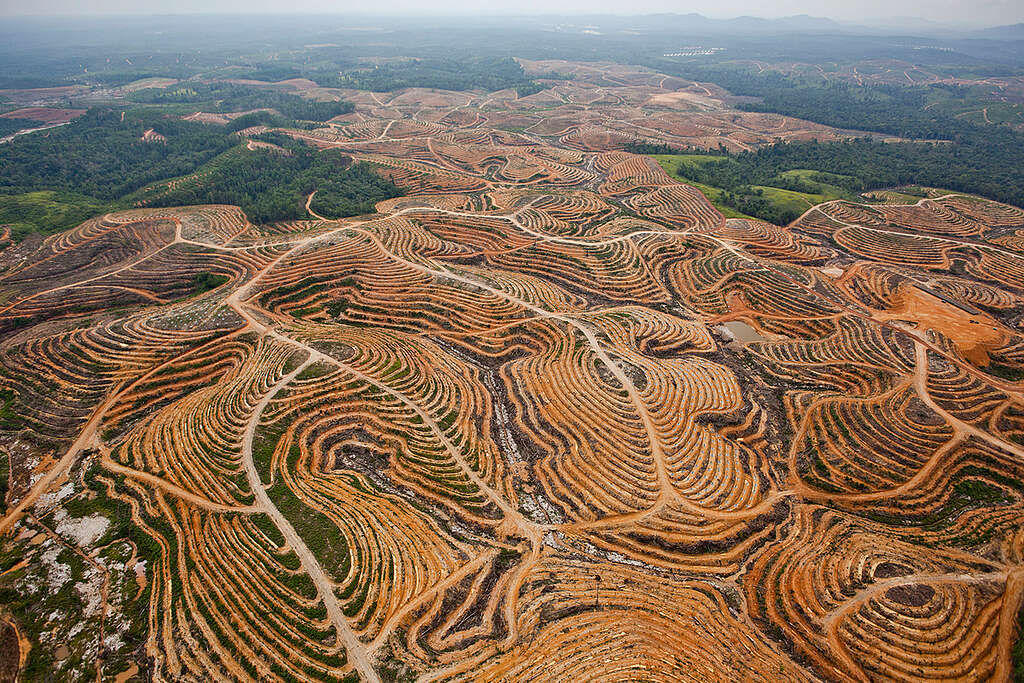
How Greenpeace is working to conserve Indonesia’s wildlife
Greenpeace is actively pushing for stronger forest protection laws and holding corporations accountable for their role in deforestation. We focus on exposing illegal logging and land-use practices, pressuring brands and companies to adopt sustainable sourcing policies, and supporting local communities in conservation and land rights efforts. We must create a balance where both wildlife and human communities can thrive without conflict
